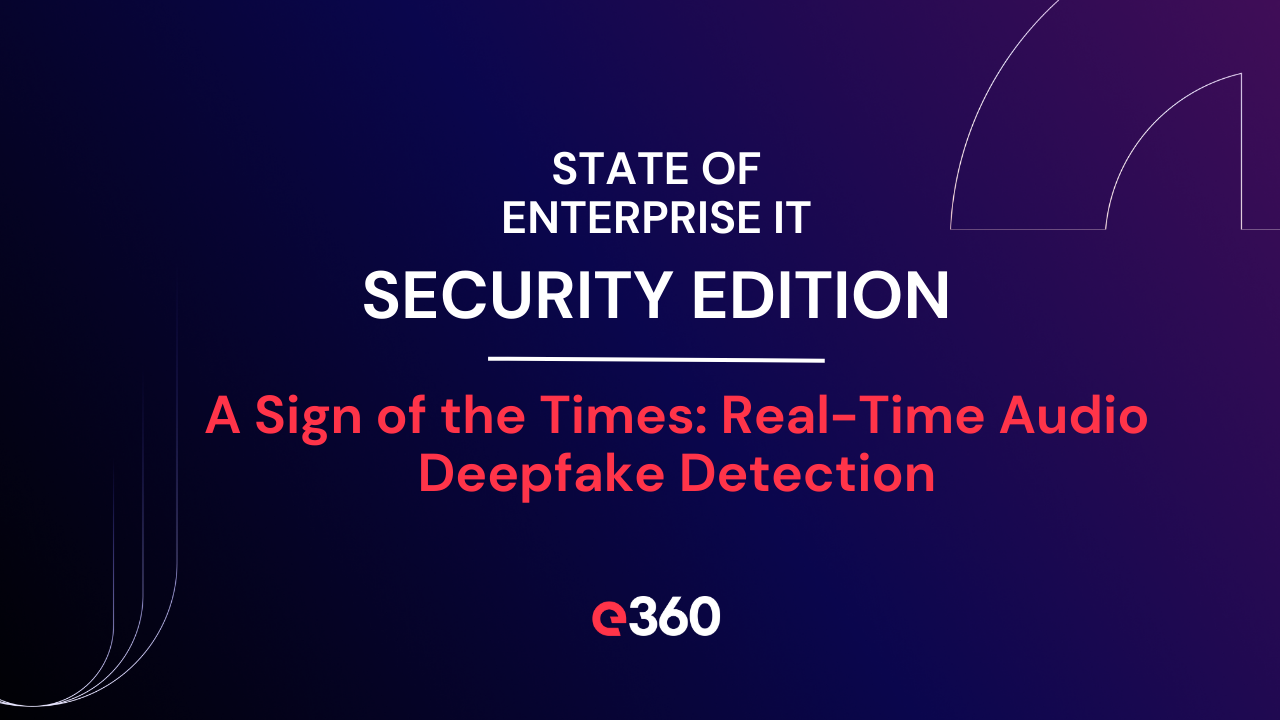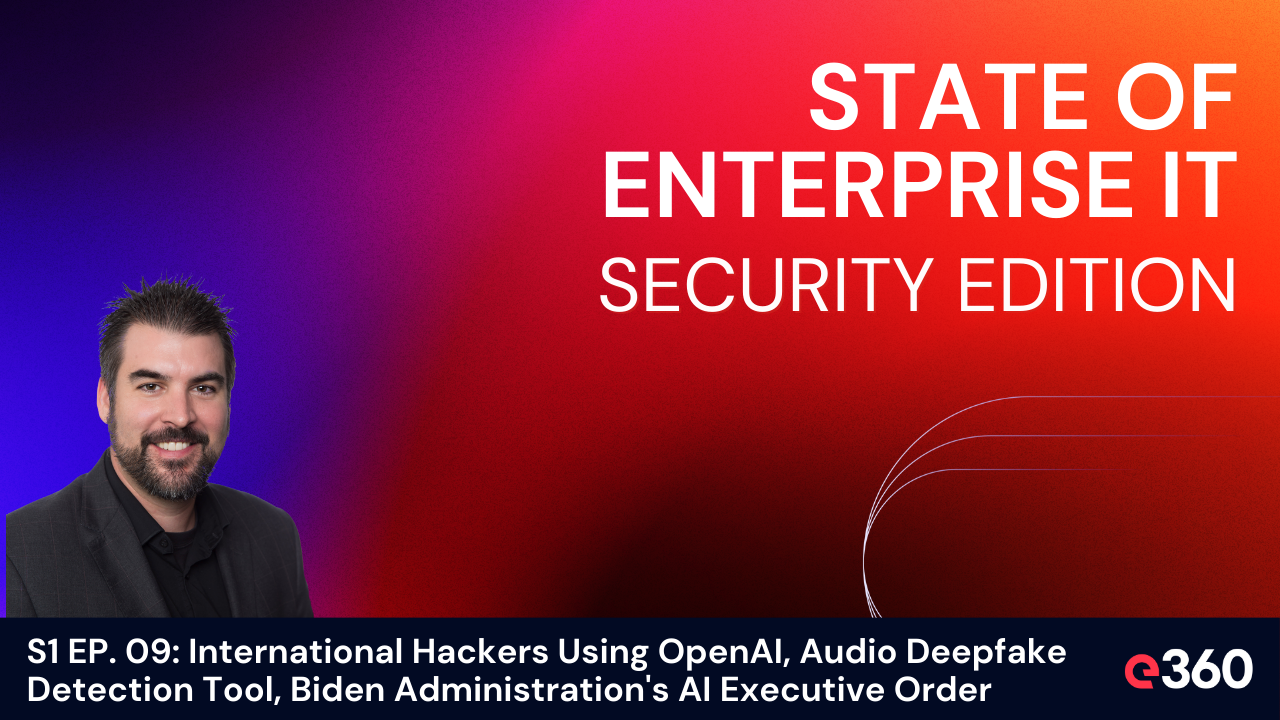In the ever-evolving battle against cyber threats, the rise of deepfakes has posed a unique challenge, blurring the lines between reality and fabrication with sophisticated audio and video manipulation techniques. In episode nine of the State of Enterprise IT Security Edition, Brad Bussie, Chief Information Security Officer at E360, shares a groundbreaking development in the fight against this digital deception: Pindrop's real-time audio deepfake detection tool, Pindrop Pulse.
Pindrop's unveiling of Pulse marks a significant milestone in cybersecurity efforts, addressing the growing concern of deepfake technology's potential to mislead, manipulate, and perpetrate fraud. Bussie's discussion sheds light on the tool's capabilities and its implications for both individual privacy and broader societal trust.
Key Takeaways:
-
Pindrop's Pioneering Deepfake Detection: "Pindrop launched a real-time audio deepfake detection tool, which they're calling Pindrop Pulse," Bussie introduces, highlighting the tool's innovation in identifying and flagging synthetic audio content in milliseconds. This rapid response is crucial in mitigating the impact of deepfakes, especially in sensitive contexts like political misinformation or financial fraud.
-
Comprehensive Detection Techniques: Bussie explains the tool's approach: "So what they do is they do a comprehensive detection. The tool, it categorizes synthetic audio, and they look for, I think it's like four different fraud categories." This multi-faceted detection capability is vital for understanding the range of techniques used in creating deepfakes, from simple voice replays to complex AI-generated speeches.
-
Applications Beyond Cybersecurity: The implications of Pindrop Pulse extend far beyond the immediate cybersecurity realm. "And this is something that's going to be helpful for call centers. It's going to be, I hope, leveraged by political campaigns," Bussie notes, acknowledging the tool's potential to safeguard democratic processes and financial transactions against the insidious threat of fake audio crimes.
-
A Beacon of Hope for Digital Integrity: Reflecting on the broader impact of technologies like Pindrop Pulse, Bussie expresses optimism: "So when I see technology like this, it makes me excited because that means that there is going to be hope." His enthusiasm underscores a crucial point: advancements in detection technologies are key to maintaining trust and integrity in the digital age.
Pindrop Pulse represents a critical step forward in the ongoing effort to combat deepfakes and restore faith in digital communications. As Brad Bussie points out, the battle against cyber threats is not just about technology; it's about preserving the fabric of truth that holds society together. As deepfake technology continues to evolve, so too must the tools and techniques to detect and deter it, ensuring a safer digital environment for all.
Brad Bussie's insights from the latest episode of the State of Enterprise IT Security Edition serve as a reminder of the importance of vigilance, innovation, and collaboration in the fight against digital deception. With technologies like Pindrop Pulse leading the charge, there's reason to be hopeful about the future of cybersecurity.
Episode Nine of the "State of Enterprise IT Security" podcast is available now. For more insights into how technology shapes our world, stay tuned to our blog for the latest in enterprise IT security and beyond.



